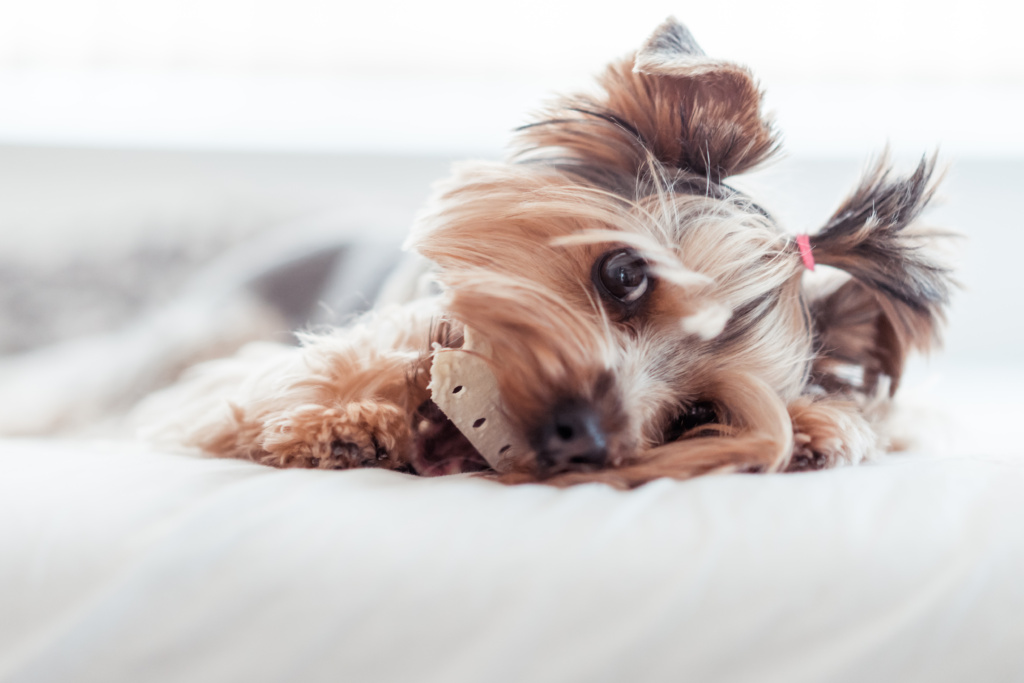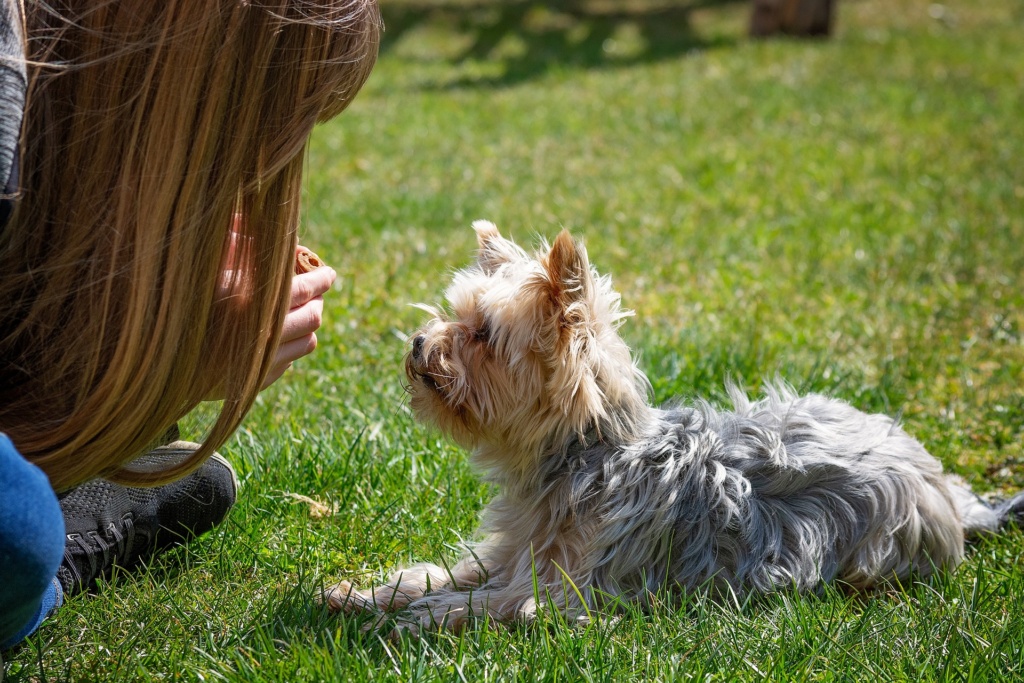Dog Training Strategies To Make Your Yorkie Terrier Dog Obedient

Basic dog training methods can be taught efficiently and effectively by repeating with the same commands, pointing out the desired action, reinforcing the good behavior and keeping your pet’s attention. You should do it many times during the day including during play time and while walking your dog. An excited tone should be used to encourage good behavior and a stern voice for incorrect behavior.
Positive reinforcement can be a powerful training tool for dogs, but it’s not as simple as just praising everything that your pup does.
Cesar Millan
#1 – Social Development
Help and make sure your dog meet and socialize with as many people as possible. These experiences allow your dog to be comfortable with humans and reduce the likelihood of any future behavior problems.
#2 – Mental And Physical Stimulation
Every dog thrives on both mental and physical stimulation. Exposing your dog to new environments and experiences can greatly enhance your dog’s interest in learning new things. Dog walks or games are great ways to stimulate your pet both mentally and physically.
#3 – Hand Feed Your Dog
Whenever possible, hand feed your dog. This teaches him/her to like human contact, even when your dog is feeding from his food bowl. Not feeding from hand can lead your dog to turn aggressive in the future to whoever that tries to get near him/her while feeding.
#4 – Training Environment
Always begin your dog training inside the home where your dog stays. Your dog will learn faster when he/she is in a familiar environment. Outdoor training should only be attempted when your dog reliably obeys commands in your home.
#5 – Step-by-Step Training
Work on one new exercise, command or trick per training session. This will allow your dog to learn, understand and familiarize each new training better and faster.
#6 – Words And Commands
Make sure you always use and repeat the same word or command for each particular training. Attempting to be creative will confuse your dog and prolong the training session.
#7 – Best Time To Train
The best time to train your dog is before each of its meal. Your dog is hungry and will respond very well to food treats. This is especially useful if you are just starting out to train your dog or you have certain difficulty with a particular command or trick. Do balance your rewards with praises and hugs so that your dog doesn’t associate every reward with just food.
#8 – Offering Rewards
Whenever your dog obeys or performs to a certain command, praise and reward your dog immediately. Do not delay in giving rewards as you might be accidentally rewarding for the wrong behaviors. After it is familiar with a particular command, reduce the frequency of the reward. This will allow your dog to continue to respond well to the same command or behavior as it won’t know when is the next reward coming.
#9 – Reprimand And Punishment
Never use any physical corrections or harsh yelling when you dog misbehave as this can cause fear and promote future aggressive behavior in your dog. Reprimand your dog by using a stern voice instead and only when you actually caught it misbehaving.
#10 – Training Sessions
Train you dog in short, frequent sessions. Dogs have a short attention span and will get easily distracted or bored. Train your dog for ten minutes each session and then play with him/her with its favorite toy to stimulate your dog’s learning process.






